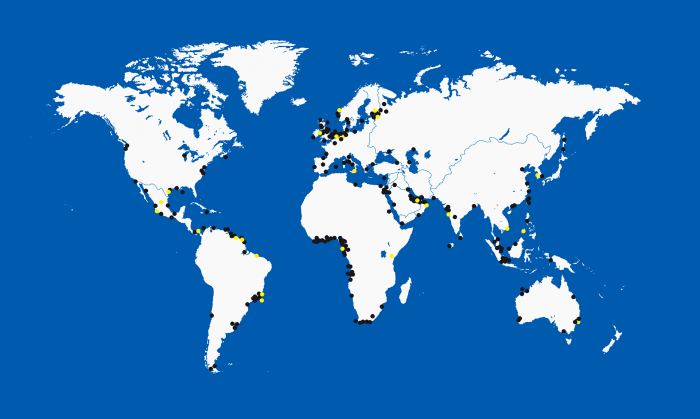Extremely complex projects are an increasingly important part of Boskalis’ work. The company was involved in the extraordinary loading and transport of the 60,000-ton Armada Intrepid FPSO which arrived safely in Batam, Indonesia after a 50-day voyage.
SMIT Towage Northwest Europe Operations Manager Jeroen van Rookhuijzen, the SMIT Towage tow master Han Verhagen and senior Project Manager at Dockwise Taco Terpstra, outline what went on behind the scenes of this exceptional Boskalis project.
Boskalis and its subsidiaries are regularly involved in these types of special projects but this one was slightly different?
Jeroen: “Specials of this kind — specialized and complex projects — make up more and more of our work in the port of Rotterdam. As well as assisting thousands of vessels a year in the port, we are involved in dozens of special projects, which depend on our professional expertise and experience. However, in this case, one of the main challenges was that the FPSO did not have any standard fittings for towage or docking. So expertise and the ability to improvise were vital.”
This really is a fantastic example of how the different Boskalis business units make each other stronger!
How do you go about organizing such a complex project?
Han: “All our specials are supervised by a tow master who acts as an operational project manager. Everything is prepared down to the smallest detail. We started by moving the FPSO to Keppel Verolme’s Dock 7. That operation involved the deployment of four tugs, each with a 60-ton bollard pull. Once it was there, our Dockwise colleagues, in consultation with the client and a marine warranty surveyor, inspected the FPSO to determine whether the bottom of the FPSO actually complied with the drawings for the loading plan and to remove any parts that were sticking out. The next step was to take the FPSO out of the dock and move it to the Caland Canal for transfer to the Dockwise flagship Vanguard in a float-on operation.”
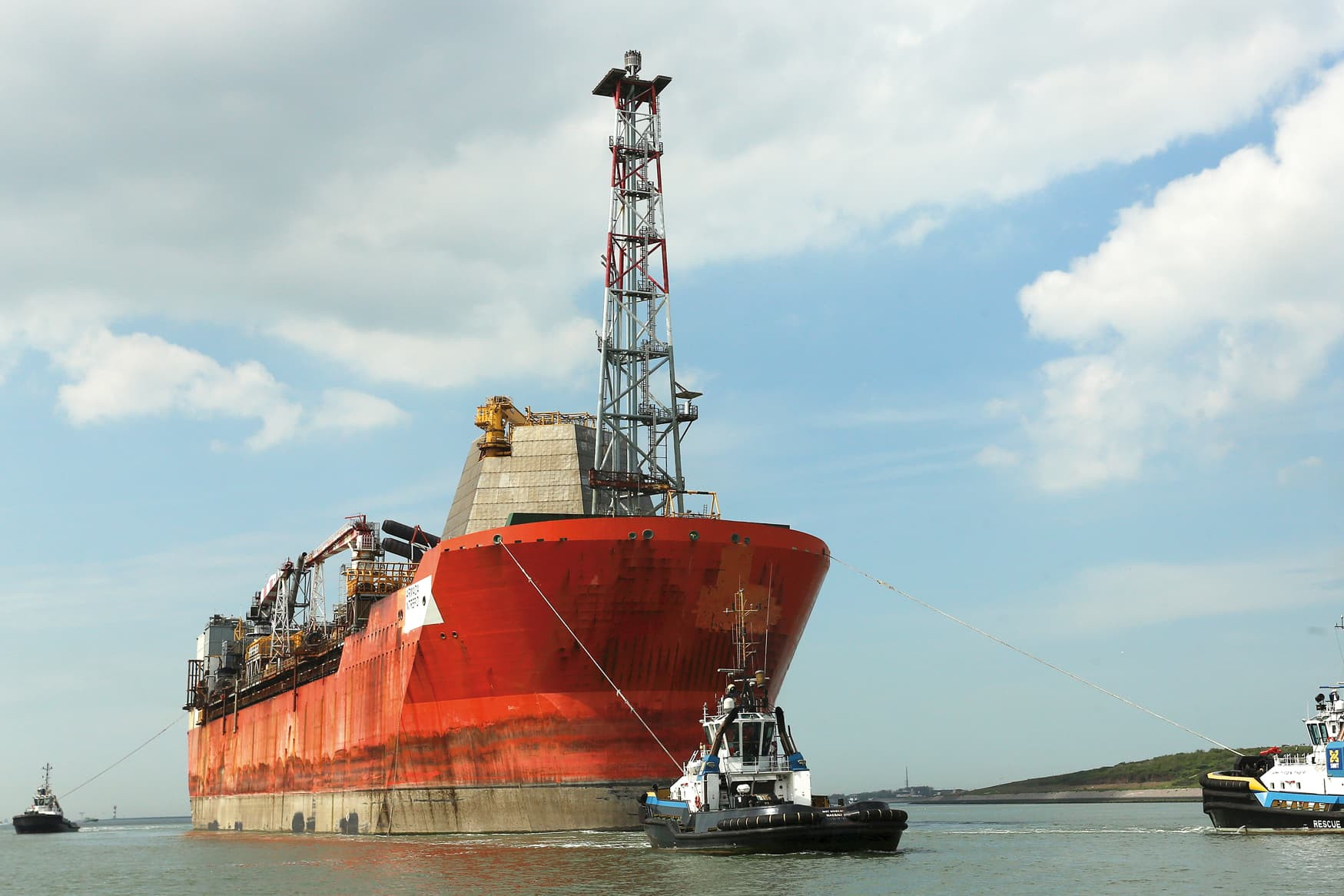
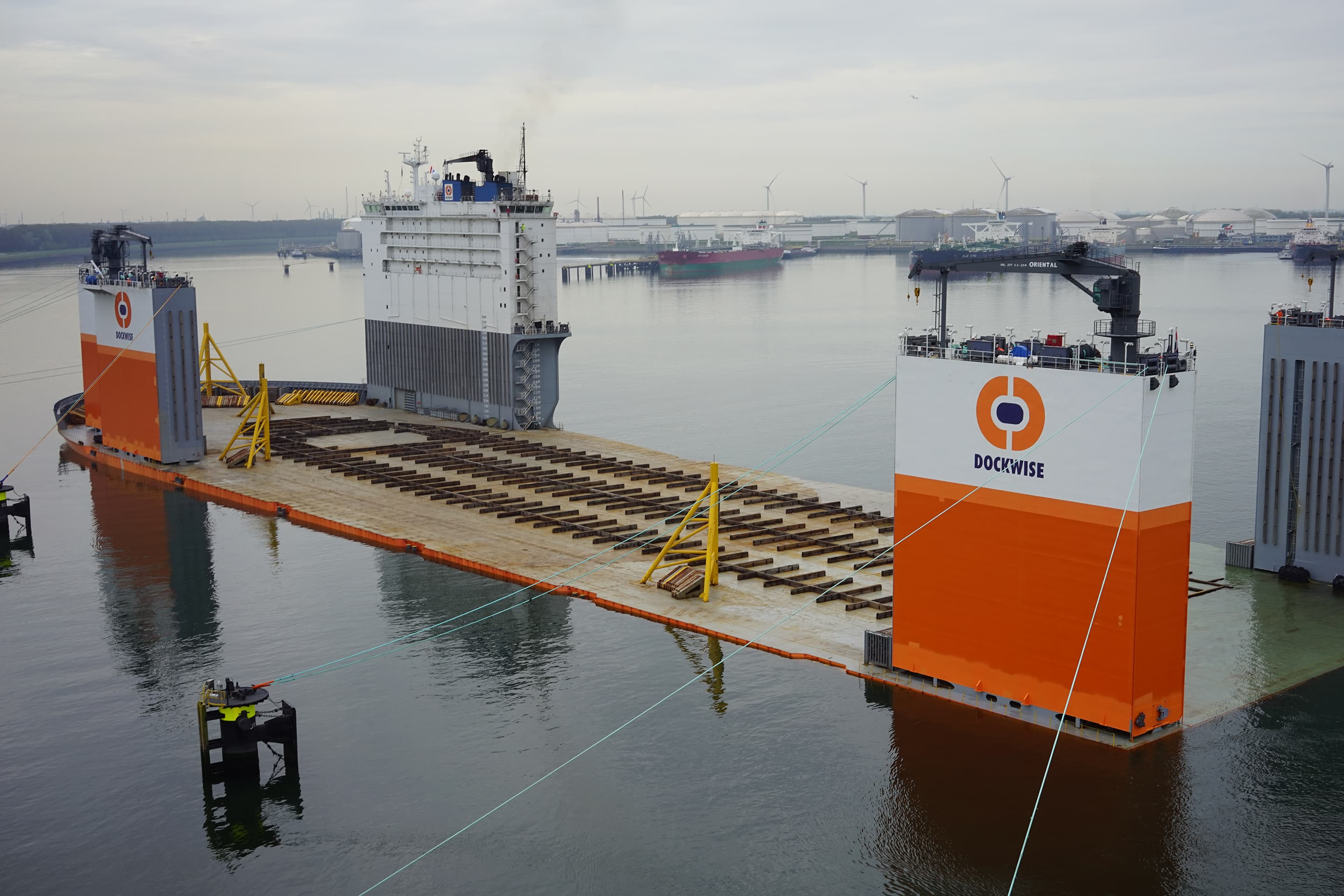
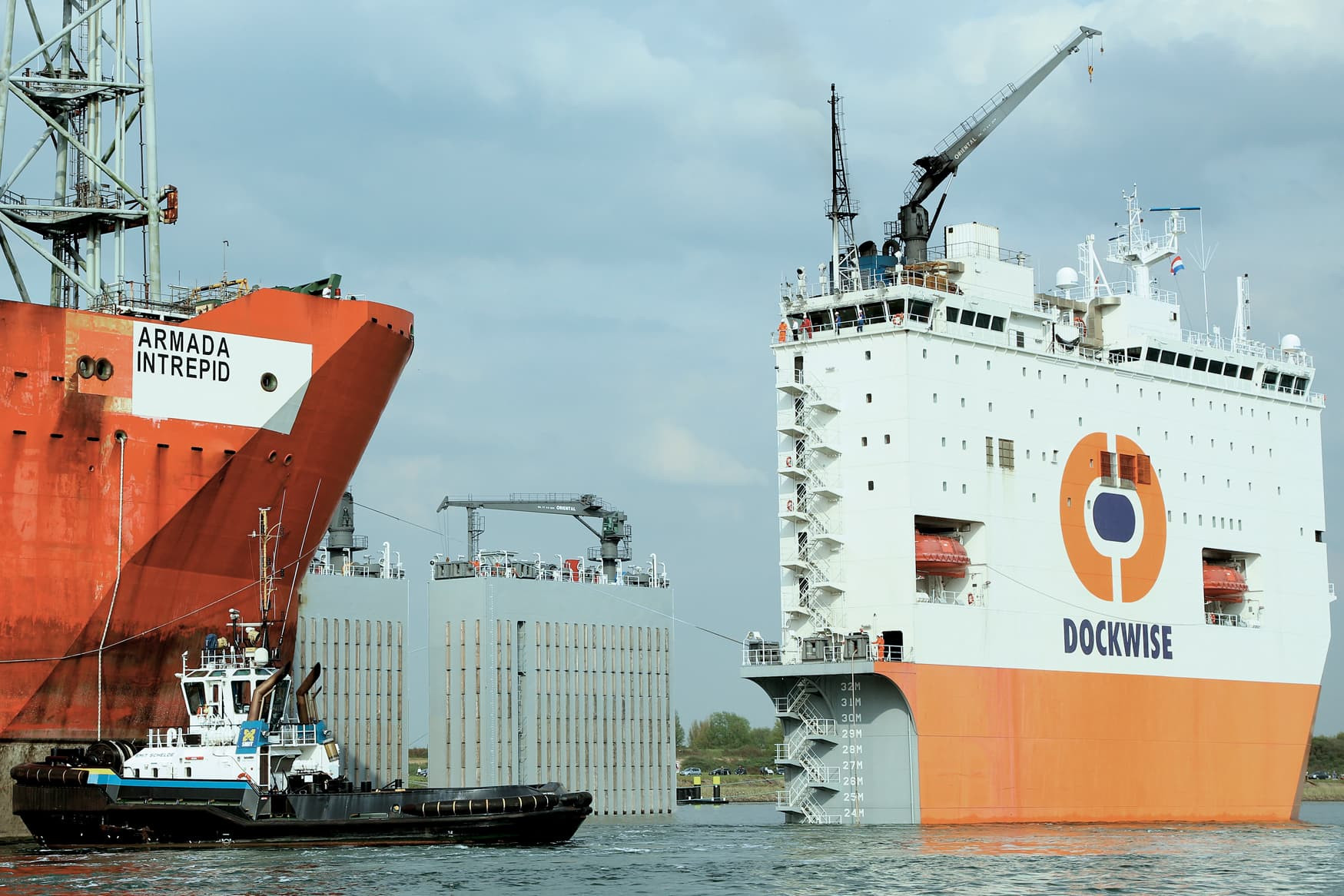
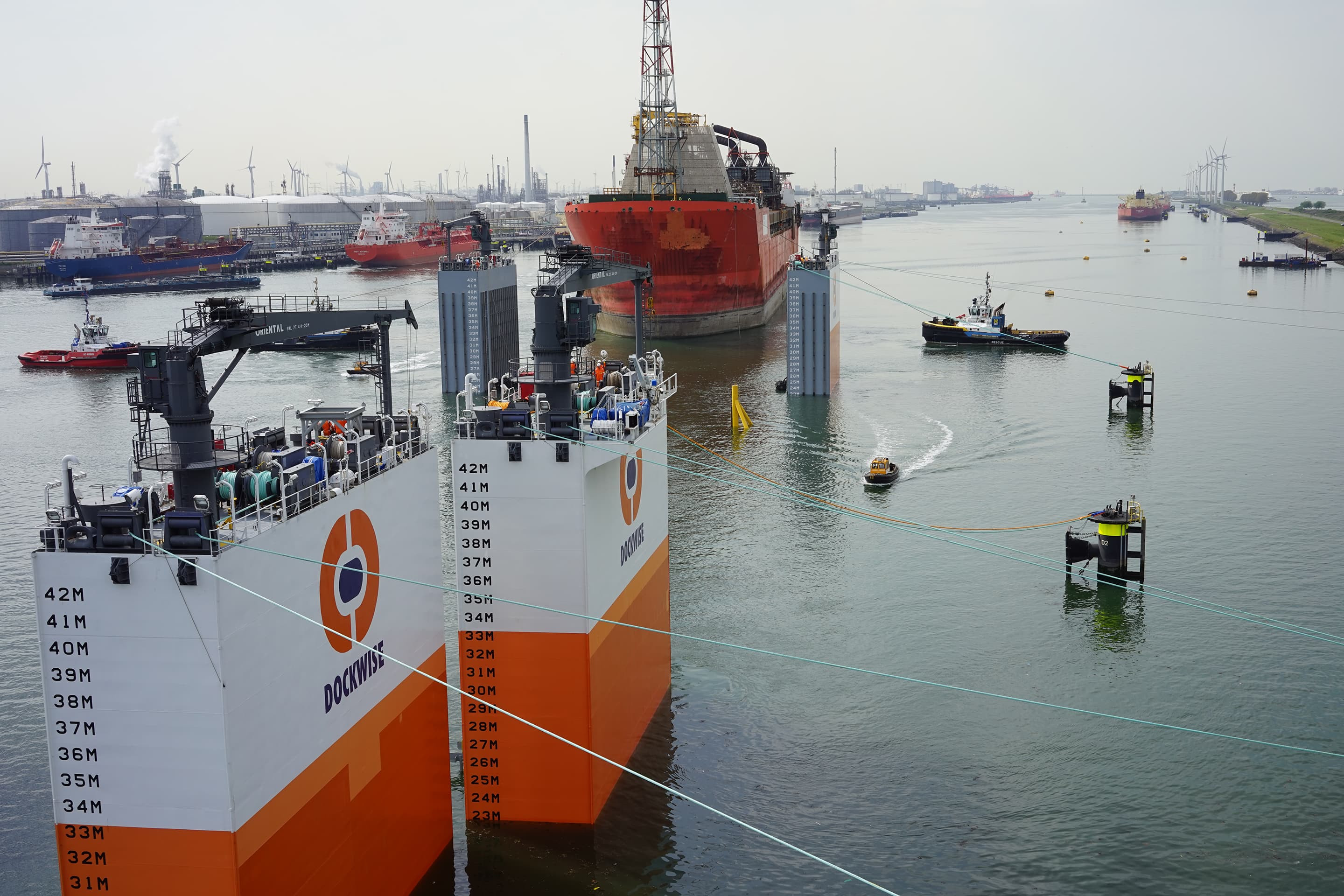
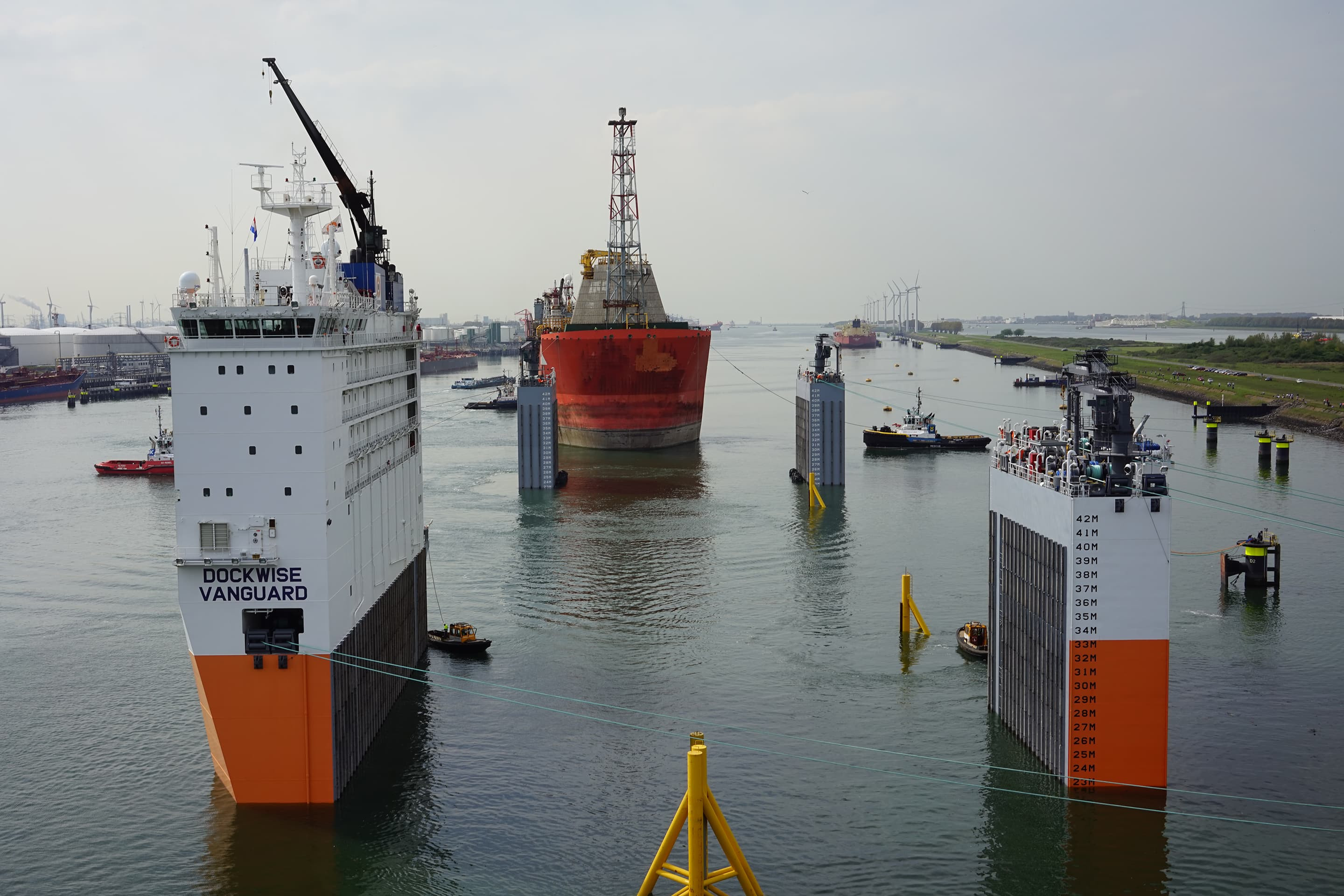
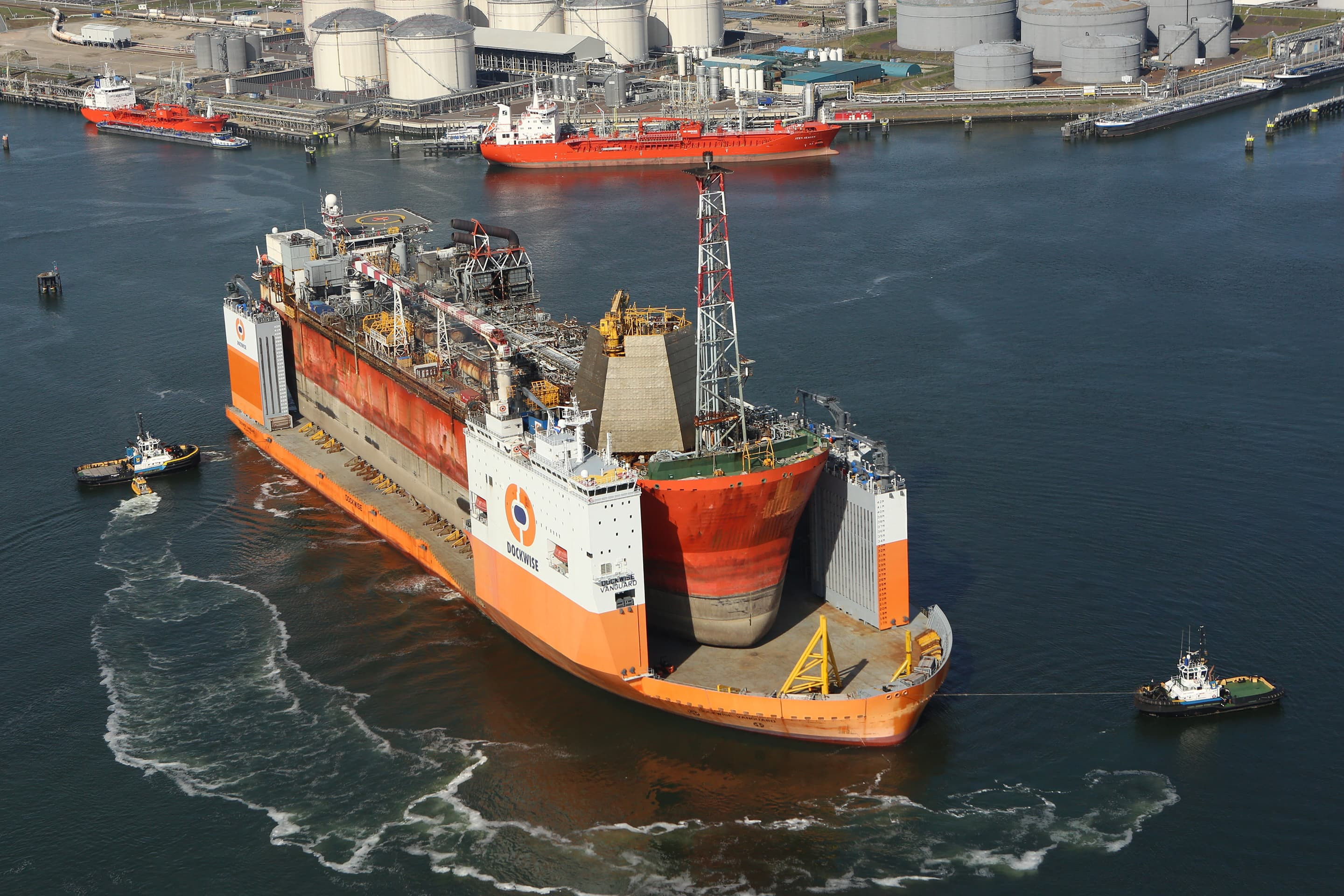
Is this the first time that the Vanguard transported a ship-shaped FPSO, and did this require any special preparations?
Taco: “Yes to both questions. The Vanguard transported the Goliat in its preceding operation, which is a round FPSO weighing 65,000 tons. And as part of the outfitting operations for the transport in Rotterdam, we removed a 54-meter high stair tower from the Vanguard that had been used for the Goliat project. That involved moving a large telescopic crane onto the Vanguard that also redistributed the cribbing wood used during the Goliat’s transportation. These are wooden beams positioned below the frames and bulkheads in the cargo to level the cargo and the ship and to spread the load evenly. The guideposts on the ship were also repositioned. These are specially welded to the deck for each operation to ensure that the cargo is positioned to within a tolerance of no more than five centimeters. Additionally, some 6,000 tons of fuel were taken on board for the trip.”
The 60,000-ton FPSO was positioned at exactly the right spot.
Extra engineering studies were also necessary weren’t they?
Taco: “We installed eight pressure sensors to check whether the actual load on the cribbing matched our computer calculations. Given the enormous weight of the FPSO, we completed some extra studies, particularly to determine the effect of wave movements on the Vanguard.”
It was vital that the weather and tidal conditions were on your side too?
Jeroen: “The weather conditions are crucial in a float-on operation of this kind. The wind must not exceed force 4, and we need visibility of at least 1,500 meters. ”Taco: “Another challenge on this project was the water depth in the Caland Canal. The Vanguard needs more than 24 meters of waterdepth for it to submerge to the right depth. That meant we had to wait for a favorable tide and we had a window of just five hours to complete the float-on. So time was certainly tight. ”Han: “Before we started, we made sure that everything was ready for the rising tide. Here, coordination between everybody involved in the operation — the tug captains, the colleagues on the Dockwise Vanguard and the pilots — is vital.”
And regarding the float-on operation itself, how did you manage that with such a colossus?
Jeroen: “Once all the preparations had been completed, the float-on started with two tugs and two push boats. The 60,000-ton FPSO was positioned at exactly the right spot, after which the tow lines were transferred to the 275-meter-long transport vessel. Then the two tugs were released and the colleagues on the Vanguard pulled the FPSO into exactly the right position with assistance from the two push boats before the Vanguard was raised again.
Taco: “The FPSO was made sea-fast with 50 welded connections crosswise and four lengthwise. This took about three days. After that, the trip of approximately 50 days to the Indonesian island Batam began. An additional eight colleagues joined the 26-man crew of the Vanguard for the journey to help with winching during loading and unloading. There were also inspectors from the client Bumi Armada on board who monitored the FPSO on the way.”
As the project is successfully completed what makes this project stand out?
Han: “This really is a fantastic example of how the different Boskalis business units make each other stronger!”
